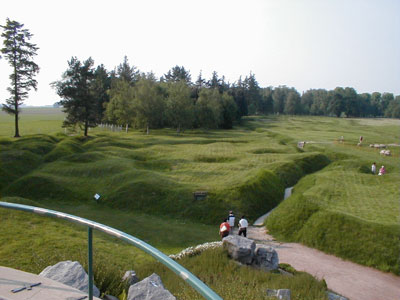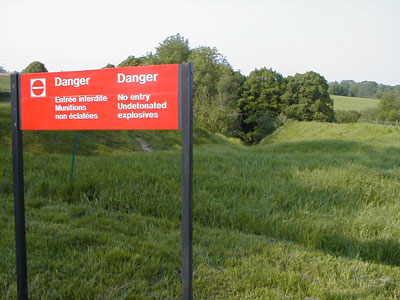 
 
|
|
Beaumont-Hamel - Newfoundland Memorial
Monday, June 04, 2001; posted by Paris
This site was preserved as a memorial to the Newfoundland soldiers who died in WWI. During one of the bloodiest battles in the 1916 campaign, the 1st Newfoundland Regiment lost more than 75% of its soldiers. In this preserved battle field we could see the 'no man's land', about 100 yards separating the enemy lines, bomb craters, support trenches and zones still loaded with dangerous, unexploded munitions.
|
 |
From this view on top of the stone mound memorial, we can see the Newfoundland trenches and the bomb craters. We were able to walk through these trenches, which are about 5-6 feet deep. At least three cemetaries are on the grounds.
|
 |
One of the many craters littering the landscape.
|
 |
This is the caribou that stands atop the stone mound memorial. The caribou was the symbol of the 1st Newfoundland Regiment. The plants on the mound are those from Newfoundland.
|
 |
Danger signs dotted some areas warning of hazards from un-exploded munitions. It is very common for farmers to unearth all sorts of war materiel. In one recent case, a farmer had stockpiled a small arsenal of unexploded munitions, some with deadly mustard gas and the town he lived in had to be evacuated after it was determined the stockpile was unstable and a hazard. Read about a recent example here.
|
 |
This is a view from the Newfoundland trench line. At the bottom of the hill was the German line - where now stands a cemetary. The German machine gunners had a clear shot at the Newfoundlanders as they would charge down the hill with 30kg of equipment, through the mud, craters and barbed wire. The trenches in 1916 were about 40km long.
|
|




